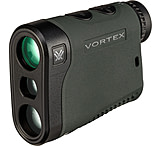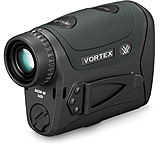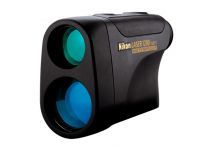 When you're looking for a rangefinder, it's important to have an idea of a few of the fundamentals of laser rangefinders from the beginning. Before we had laser rangefinders, we had much inferior optical rangefinders whose accuracy varied with the distance and which often gave inconsistent readings from one user to the next. They were also large and cumbersome for field work and rather slow to operate. As to accuracy, they were crude by today's standards, though certainly better than a guess. Because of these shortcomings, most folks tended to go without a rangefinder when they headed to the hunting field or golf course.
When you're looking for a rangefinder, it's important to have an idea of a few of the fundamentals of laser rangefinders from the beginning. Before we had laser rangefinders, we had much inferior optical rangefinders whose accuracy varied with the distance and which often gave inconsistent readings from one user to the next. They were also large and cumbersome for field work and rather slow to operate. As to accuracy, they were crude by today's standards, though certainly better than a guess. Because of these shortcomings, most folks tended to go without a rangefinder when they headed to the hunting field or golf course.![]()
Laser rangefinders have changed all that. Even the lowest priced laser rangefinder is capable of far better performance and accuracy than any optical rangefinder and all in a unit that can fit in your pocket in many cases. So how do they do it? What makes laser rangefinders work? What are the basics of a laser rangefinder?
Despite all the technology that goes into a laser rangefinder, they are rather simple in concept. They are, in fact, very much related to auto focus cameras which used the same technology prior to the widespread use of laser rangefinders.
How Do Laser Rangefinders Work?
 In autofocus cameras, an invisible infrared laser beam is projected to the subject. The beam hits the subject, reflects back to the camera and is detected via a sensor. A computer chip then translates the time it took for the beam to travel to the subject and back into a distance to the subject. Based on this calculated distance, the computer chip then sends a signal to motors on the camera/lens with instructions to focus the lens to that specific distance.
In autofocus cameras, an invisible infrared laser beam is projected to the subject. The beam hits the subject, reflects back to the camera and is detected via a sensor. A computer chip then translates the time it took for the beam to travel to the subject and back into a distance to the subject. Based on this calculated distance, the computer chip then sends a signal to motors on the camera/lens with instructions to focus the lens to that specific distance.
Initially, this technology was slow and clumsy and not altogether reliable, but as with all things digital, the technology moved forward, rapidly. In a few short years, manual focus cameras were all but obsolete. The camera world has never been the same since.
Laser rangefinders use that same principle, minus the camera lenses and motors. Once again, an invisible infrared laser beam from the laser rangefinder (LRF) hits the target, then reflects back to the device. A computer chip in the LRF then translates the time it took for the laser beam to return into a distance and that is then displayed on a screen. It's lightning quick because a laser beam moves at the speed of light. You have a reading in a matter of seconds.
This technology is also very accurate. Unless otherwise specified, you can expect just about any LRF to have an accuracy of plus or minus one yard/meter. That is more than ample accuracy for a huge range of applications. When more accuracy is needed, technology now allows the most sophisticated LRFs to measure down to mere inches.
What Is the Maximum Power and Range of a Rangefinder>
As you might expect, then, not all laser rangefinders are equal. Your first glance at the various models will reveal that some laser rangefinders offer greater range than others: some advertise a 400 yard range, others 800 yards and some are accurate to distances greater than a kilometer. So are the long range models using more powerful lasers?
No. In fact, typical consumer handheld laser rangefinders all use a class 1 laser. So why do some laser rangefinders list a 300 yard maximum range and others a 1200 yard maximum range? The difference is not in power, but in quality. The tightness and uniformity of the laser and the capability of the computer chip or sensor to process the information determine the distance. A sensor that can detect lower light, filter out false information, and so on will handle greater ranges. The cost is greater with the longer distance models, but for some applications it is necessary.
Advetised Ranges of Laser Rangefinders
If you read the previous few paragraphs, then you should understand why listed ranges that some manufacturers publish for their LRFs should be taken with a grain of salt. There are just too many factors that influence the effective range of an LRF in the real world. That's why some manufacturers do not list ranges for their models or say that stated yardages are merely approximations not to be taken too literally. Until there is an industry-wide standard for measuring effective ranges of LRFs, it is a mistake to make buying decisions based purely on advertised ranges. So how do you determine which Laser Rangefinders have longer effective ranges?
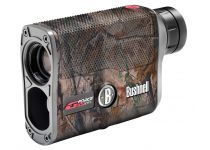 Price can be used as a very rough guideline, once you have factored out other features that can influence price, such as waterproofing, tilt compensation, ballistic programs and so on. Often the best way to find out the real world performance is to read rangefinder reviews. Laser rangefinders are by nature electrical devices, thus it is rare to find a manufacturer that will offer more than a one or two year warranty. And just because the same manufacturer offers a lifetime warranty on their binoculars or rifle scopes doesn't mean they offer the same on their laser rangefinders.
Price can be used as a very rough guideline, once you have factored out other features that can influence price, such as waterproofing, tilt compensation, ballistic programs and so on. Often the best way to find out the real world performance is to read rangefinder reviews. Laser rangefinders are by nature electrical devices, thus it is rare to find a manufacturer that will offer more than a one or two year warranty. And just because the same manufacturer offers a lifetime warranty on their binoculars or rifle scopes doesn't mean they offer the same on their laser rangefinders.
Now that you have a better idea of the basics of laser rangefinders, be sure to check out our articles on How to Buy a Laser Rangefinder and Hunting vs. Golfing Rangefinders.
A word of caution when it comes to listings for maximum range on laser rangefinders. There are a huge number of variables involved when it comes to achieving the maximum range on a rangefinder. In fact, there are so many "ifs" when it comes to maximum range that some manufacturers have simply stopped listing a maximum range. In other words, when you see a maximum range listed for any LRF, take that with a grain of salt. There is no guarantee that it will translate into real world performance.
Maximum Range
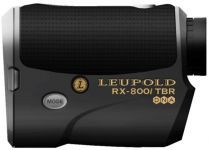 One of the most important variables for determining maximum range is the user. Imagine that you are a hunter and you are trying to get the range on a deer that is somewhere in the several hundreds of yards distance category. At a distance of 300 yards, that deer presents a tiny target. You put the LRF crosshairs on the deer and try to hold it steady enough to get a reliable reading. This is not at all an easy thing to do. The LRF will likely be no easier to steady than the crosshairs on your rifle scope. In fact, because the LRF is much smaller and lighter than your rifle scope/gun combo, it can prove much harder to steady. So even if you have the most capable 1500 yard laser rangefinder on the market, if you can't hold it steady enough to get a reading, it's no better than a cheap laser rangefinder. Experienced hunters often try to target a large object close to a distant game animal rather than the animal itself when steadiness is an issue. This is a laser rangefinder fundamental that is overlooked. Using the rangefinder correctly is as important as having a quality model.
One of the most important variables for determining maximum range is the user. Imagine that you are a hunter and you are trying to get the range on a deer that is somewhere in the several hundreds of yards distance category. At a distance of 300 yards, that deer presents a tiny target. You put the LRF crosshairs on the deer and try to hold it steady enough to get a reliable reading. This is not at all an easy thing to do. The LRF will likely be no easier to steady than the crosshairs on your rifle scope. In fact, because the LRF is much smaller and lighter than your rifle scope/gun combo, it can prove much harder to steady. So even if you have the most capable 1500 yard laser rangefinder on the market, if you can't hold it steady enough to get a reading, it's no better than a cheap laser rangefinder. Experienced hunters often try to target a large object close to a distant game animal rather than the animal itself when steadiness is an issue. This is a laser rangefinder fundamental that is overlooked. Using the rangefinder correctly is as important as having a quality model.
This same strategy is very useful on the golf course. A golf flag is an even smaller target than a deer, especially on a calm day when the flag remains in a fold. Targeting a large object near the flag with a golf rangefinder is usually a better strategy. For example, if you are a golfer on top of that hill and the cup is downhill adjacent to the base of a tree, which reading do you use to calculate how much power you need for your shot?
You use the horizontal distance to the tip of the tree at your eye level. If you power up based on the longer reading to the bottom of the tree, down below you, you will overpower and shoot well beyond the cup due to gravity. In this case, the rangefinder actually ignores differences in elevation between you and your target. The only distance it cares about is that horizontal distance between you and your target.
What Does Angle Compensation Do?
Some laser rangefinders have a feature called angle compensation. If all we ever encountered was flat, level ground, we'd have no need for this advanced feature. Once you or your target are on different levels you need to factor in the elevation difference as you are now dealing with two distance measurements. To illustrate this, let's assume you are standing on a hill that is 100 feet in elevation. Below you, at the bottom of the hill is a large tree that just happens to be 100 feet tall. The tip of the tree, then, is at eye level from your position on the top of the hill. The base of the tree, though, is far below you, down at the bottom of the hill. How far is it to the tree?
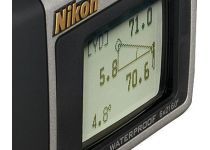 That's an incomplete question. You have to decide which part of the tree you want to target. Will it be the tip of the tree straight out in front of you at eye level or will it be the base of the tree that is far below you at an angle? You decide to take both readings. You quickly discover that the distance to the tip of the tree at your eye level, the horizontal distance, is considerably shorter than the straight line distance down the hill to the base of the tree. That distance corresponds to the hypotenuse of the triangle that you are making with the tip of the tree and the base of the tree. It's simple geometry, but it's a lot easier to find if you have the right laser rangefinder.
That's an incomplete question. You have to decide which part of the tree you want to target. Will it be the tip of the tree straight out in front of you at eye level or will it be the base of the tree that is far below you at an angle? You decide to take both readings. You quickly discover that the distance to the tip of the tree at your eye level, the horizontal distance, is considerably shorter than the straight line distance down the hill to the base of the tree. That distance corresponds to the hypotenuse of the triangle that you are making with the tip of the tree and the base of the tree. It's simple geometry, but it's a lot easier to find if you have the right laser rangefinder.
Unfortunately for golfers and hunters, you don't often have a convenient tree available to give you a true horizontal distance to a target below you or above you, as the case may be. What do you do, then, when you are in open country at the top of that hill and there is no tree? If you have an LRF that is not tilt or angle compensated, the only reading you can get is down the hill to the target. There is no tip of a tree at eye level to target for that horizontal distance. This down the hill distance to the target is probably better than a guess and, if you're smart, you know that this down the hill reading to the target will need to be shortened to compensate for the elevation difference between you and the target. You make a rough guess as to how much to reduce the down the hill reading and go from there.
If you have a tilt or angle compensated rangefinder, though, it will compensate for the difference in elevation because it can detect and measure the angle produced by the difference in elevation. It can also calculate the horizontal distance based on that angle and do it in the blink of an eye. Some models may also display the angle involved, but all models will display that corrected or horizontal distance to the target for you. This is an incredibly important feature for hunters that do a lot of mountain hunting or typically hunt using a tree stand. It's also a big plus for golfers who play on hilly golf courses.
What Are the Different Laser Rangefinder Modes?
Scan Mode
Scan mode is a useful mode found on most laser rangefinders. Simply hold down the button as you pan back and forth across the landscape and readings will change as you pass various targets. It's a useful feature to get the lay of the land and it can also be used to note distance changes on a moving target.
Brush, Zip mode, Distant Target Priority
This is actually a filter that tells the LRF to ignore intervening brush between you and your target. In other words, the LRF seeks to target the more distant objects that you want to see. This is a must-have feature for hunters who frequently have to deal with objects between them and their target. For many hunting laser rangefinders, this is typically the default mode.
If you are an experienced hunter or target shooter, you know that your bullet begins to drop as soon as it leaves the muzzle. Just how much of a drop occurs at any given range will depend on your cartridge, the load used, and how you zero the scope. LRFs with a ballistic program will help you determine how much hold over or hold under to use for a given distance with your cartridge. Be warned, though, that these models can be quite complex and you will need to spend a lot of time learning how to program and use the ballistic mode before you head out in the field. For the technically inclined hunter this is a very useful tools.
Magnification
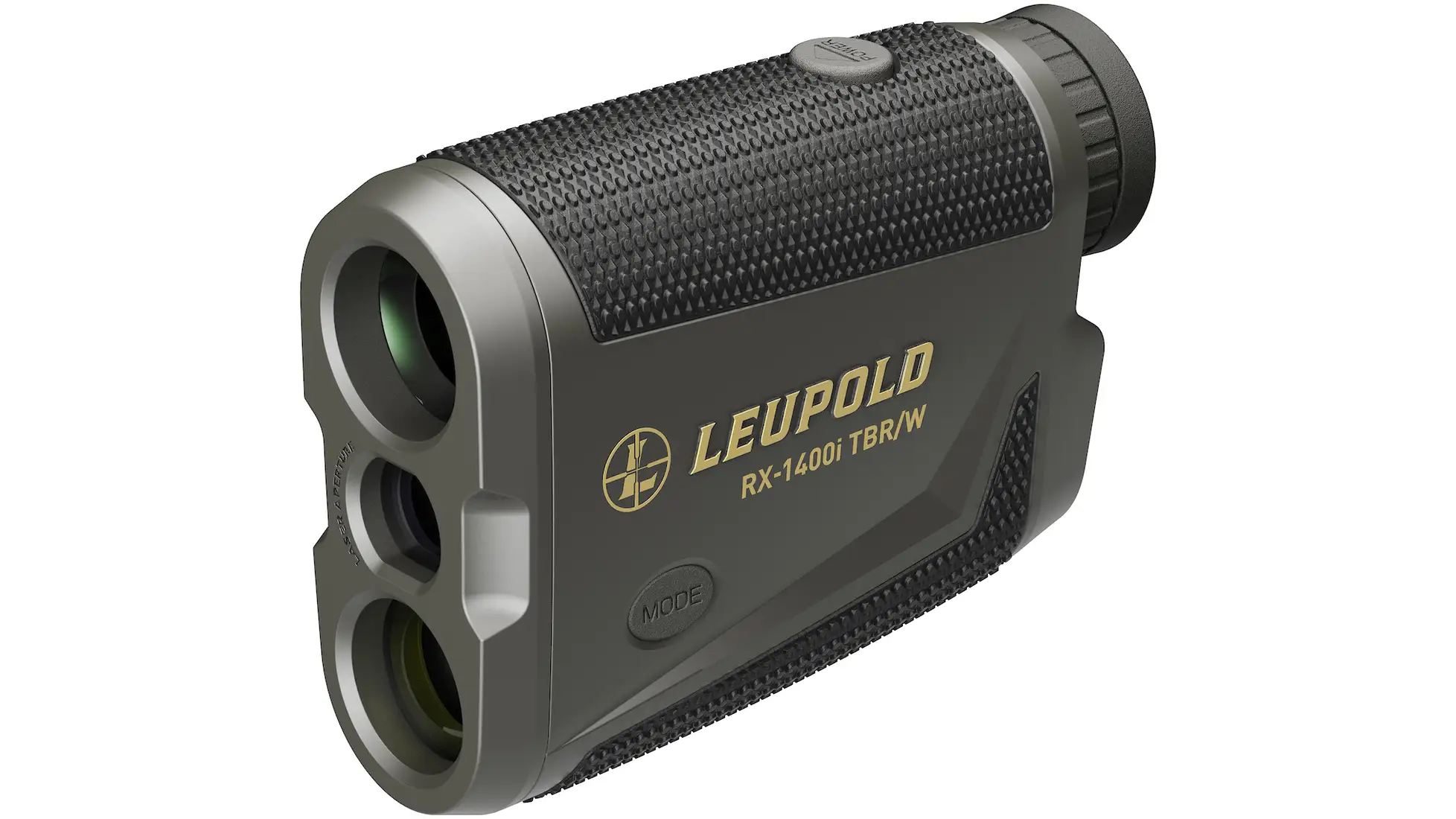 Most, but not all, laser rangefinders offer some magnification to improve target accuracy. This effectively increases the range at which you can use your LRF. Compact laser rangefinders are usually a monocular, though there are binocular laser rangefinders on the market. Binocular laser rangefinders offer you the convenience of two instruments in one, but they are more expensive than monocular laser rangefinders and they are also heavier and bulkier than the same binocular without the laser rangefinder.
Most, but not all, laser rangefinders offer some magnification to improve target accuracy. This effectively increases the range at which you can use your LRF. Compact laser rangefinders are usually a monocular, though there are binocular laser rangefinders on the market. Binocular laser rangefinders offer you the convenience of two instruments in one, but they are more expensive than monocular laser rangefinders and they are also heavier and bulkier than the same binocular without the laser rangefinder.
A note on rangefinder binoculars: When shopping for binoculars with a rangefinder, be sure to check that it is a laser rangefinder binocular as opposed to simply a binocular with a rangefinder. Many marine binoculars employ a low-tech grid style optical rangefinder that you see when you look through the binocular. In order to use it, you must know the size of the object in question, then do the math to estimate range to target in much the same way a true mil dot reticle on a rifle scope can be used by a knowledgeable shooter to estimate range. Binoculars with this optical grid style rangefinder are typically much cheaper than a laser rangefinder binocular, so while you may save money, you may not get what you want.
What Factors Affect Laser Rangefinders?
Environmental Factors
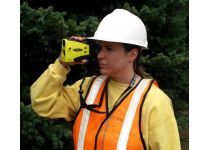 Any environmental factor that slows down or disperses the beam of light from your LRF can affect the performance of your LRF. The speed of light is constant in a vacuum, but it varies when passing through different types of matter. For instance, the speed of light is different through denser air than thinner air, so things such as elevation, humidity, and even temperature, which affects air density, can also affect the accuracy of an LRF. In general these factors are only of small concern and can all but ignored for field work, but they're important to keep in mind.
Any environmental factor that slows down or disperses the beam of light from your LRF can affect the performance of your LRF. The speed of light is constant in a vacuum, but it varies when passing through different types of matter. For instance, the speed of light is different through denser air than thinner air, so things such as elevation, humidity, and even temperature, which affects air density, can also affect the accuracy of an LRF. In general these factors are only of small concern and can all but ignored for field work, but they're important to keep in mind.
Fog, rain, dust, and smog, on the other hand, have a more dramatic effect on rangefinders. Because of this, some LRFs have a rain mode or fog mode which help to an extent, but keep in mind they can't work miracles. Heavy rain, snow or fog can render an LRF nearly useless by drastically dispersing the light.
Another rangefinder fundamental to be aware of is waterproofing. This is highly recommended for outdoor use, especially if you expect to encounter poor weather. Waterproofing seals not only keep out water, but also dust and dirt. It's hardly an essential feature for fair weather activities like golf, but it's still a smart feature to look for, as the electronics could be ruined by a little too much water. Waterproofing is an essential for hunting rangefinders.
How Color and Surface Brightness Affect Reflectivity
A hard, smooth, shiny, bright colored target reflects a beam of light to your LRF much better than a rough, dark, opaque target. That's why the effective range of an LRF is better for the first type of target and much reduced for the second.
Color can have an effect. Dark objects and dark colors tend to absorb light energy from that LRF beam and reflect back less light to the laser rangefinder. Range is reduced for these types of targets. Likewise, targets with rough textures or soft textures tend to disperse light and therefore reduce the amount of light reflected back to your LRF.
This is why some manufacturers list a reflective range and a non-reflective range for some models of their laser rangefinders. Hunters should keep in mind that game animals are always considered a non-reflective target. A golf flag, on the other hand, is more of a reflective target.





